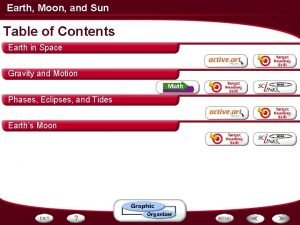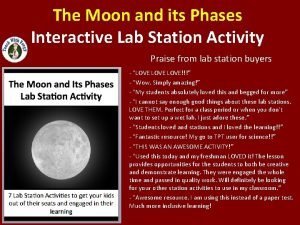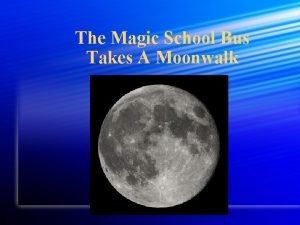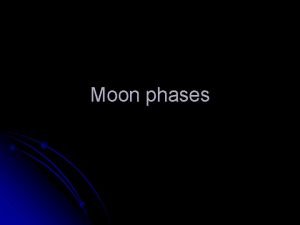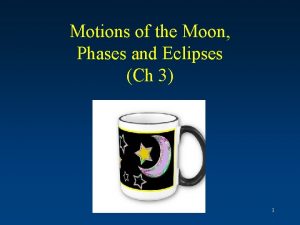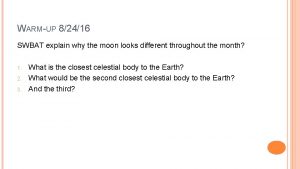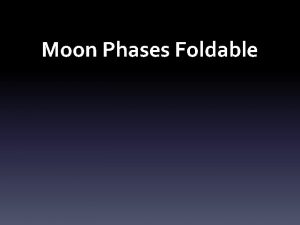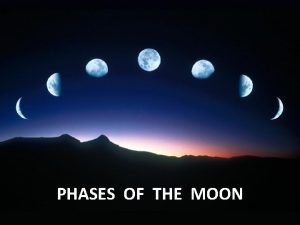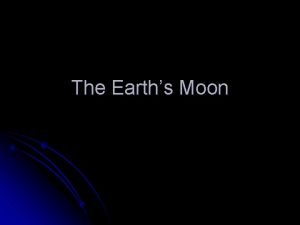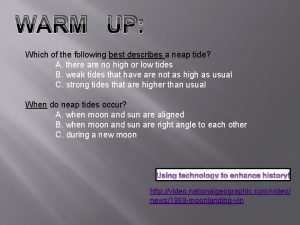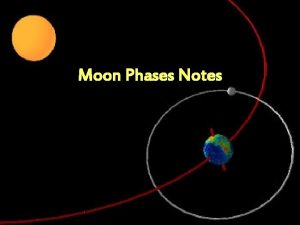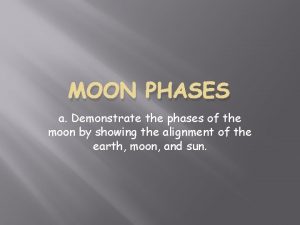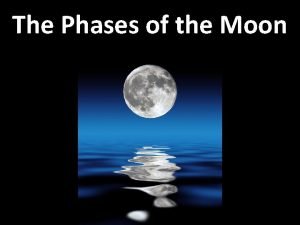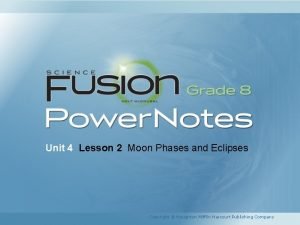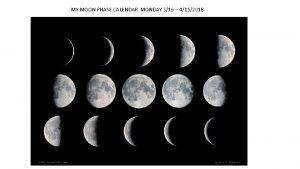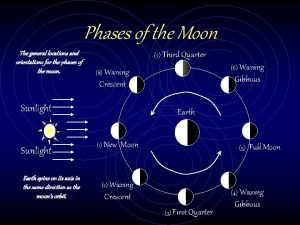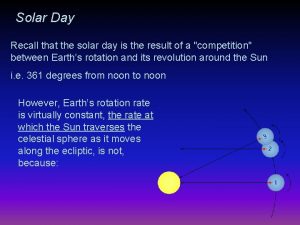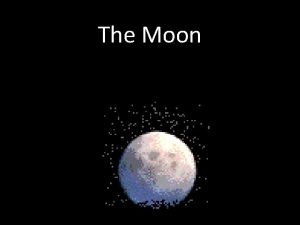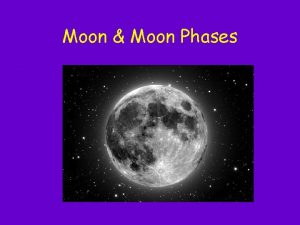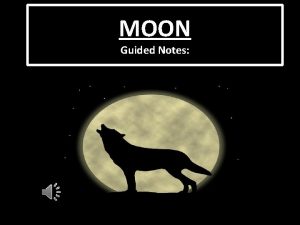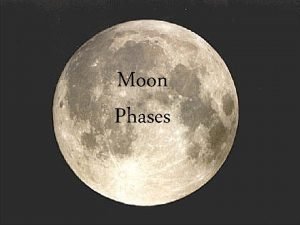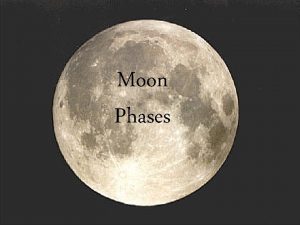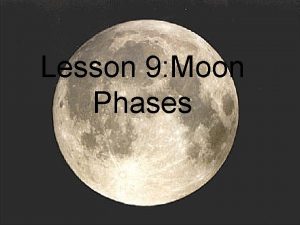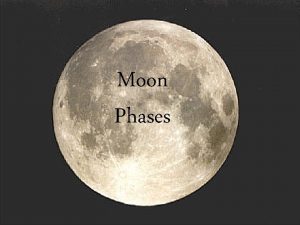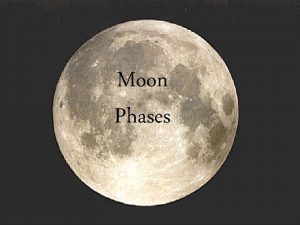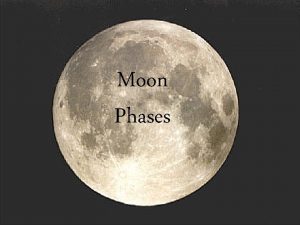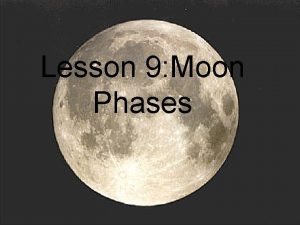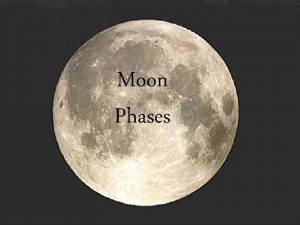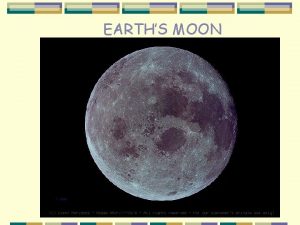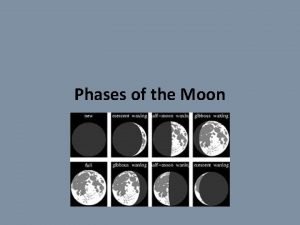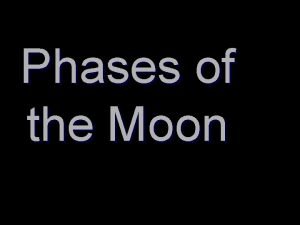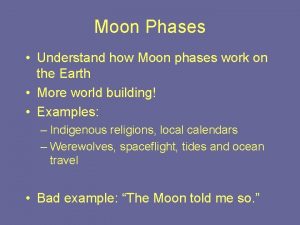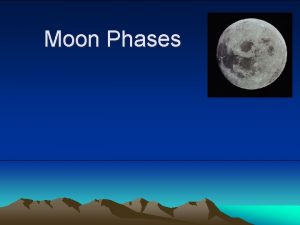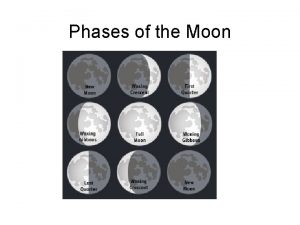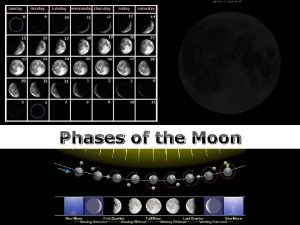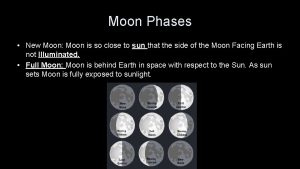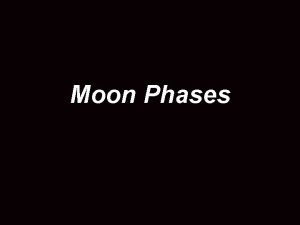Phases of the Moon Half of the moon

























- Slides: 25

Phases of the Moon


• Half of the moon is always illuminated

• Half of the moon is always illuminated • We see all, none, or some of that illumination



The same side of the moon always faces the Earth.

The same side of the moon always faces the Earth.

The same side of the moon always faces the Earth. Time for one rotation (axis) = Time for one orbit (Earth)

• Half of the moon is always illuminated • We see all, none, or some of that illumination

• Half of the moon is always illuminated - But it’s not always the same half! • We see all, none, or some of that illumination

A few notes for the take home. . . 2 4π ____ 3 2 a p = G(MEarth) p 2 C ___ = MEarth p: period (time for Moon to go around Earth) a: Moon-Earth distance Take home #1: If M becomes 0. 5 M, what is the new value of p?

A few notes for the in-lab. . .

A few notes for the in-lab. . .

A few notes for the in-lab. . .

A few notes for the in-lab. . .

A few notes for the in-lab. . .

A few notes for the in-lab. . .

A few notes for the in-lab. . .



2 p = 3 a p: period in Earth years for one orbit around the Sun a: distance in AU from the planet to the Sun

p 2 2 4π ____ 3 a = G(M 1+M 2) G = gravitational constant = 6. 67 x 10 -11 m 3/kg/s 2 MSun = 1. 99 x 1030 kg MPlanet << MSun 2 4π ____ 3 2 a p = G(MSun) seconds years meters AU 2 4π ____ = 1 G(MSun)

GM 1 M 2 _______ F= d 2 F = force that the Moon feels as it orbits the Earth M 1= Earth’s mass M 2 = Moon’s mass d = distance between Earth and Moon If d stays the same, what happens to F if Earth’s mass decreases?

p 2 2 4π ____ 3 a = G(M 1+M 2) G = gravitational constant = 1. 475 x 10 -34 AU 3/kg/day 2 MEarth = 5. 97 x 1024 kg MMoon = 7. 36 x 1022 kg p = period in days of the Moon’s orbit around Earth a = distance in AU between Moon and Earth 1 AU _______ a = 400, 000 km x =. 002667 AU 150, 000 km
 The phases of moon occur mainly due to
The phases of moon occur mainly due to Moon phases interactive notebook
Moon phases interactive notebook Magic school bus sun and moon
Magic school bus sun and moon Moon phases characteristics
Moon phases characteristics Moon phases jeopardy
Moon phases jeopardy The phases of the moon
The phases of the moon Moon phases and eclipses
Moon phases and eclipses What causes the phases of the moon
What causes the phases of the moon Moon phase bingo
Moon phase bingo Phases of the moon sun on left
Phases of the moon sun on left Moon phases foldable
Moon phases foldable Names of the phases of the moon
Names of the phases of the moon Moon phases
Moon phases Which statement best describes the phases of the moon?
Which statement best describes the phases of the moon? Lunar movement
Lunar movement Moon phases when the sun is on the left
Moon phases when the sun is on the left Eight phases of the moon
Eight phases of the moon A waxing gibbous phase is ______.
A waxing gibbous phase is ______. Lesson 2 moon phases and eclipses answer key
Lesson 2 moon phases and eclipses answer key Moon phases foldable
Moon phases foldable Hawaiian moon phases
Hawaiian moon phases What phase is this
What phase is this Moon phases
Moon phases Define waning gibbous
Define waning gibbous New moon facts
New moon facts What is the moon made out of
What is the moon made out of
